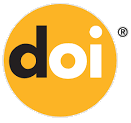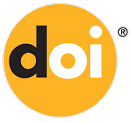PENGENALAN KOMPONEN KOMPUTER BERBASIS AUGMENTED REALITY PADA ANDROID DENGAN METODE SINGLE MARKER
Abstract
Computers are one of the most popular electronic devices today. With the development of PC games and Esports in the world, computers are becoming more and more popular among young people today. Computers have many components that are needed as a support so that the computer can be used. At the education level, students are taught about the components in a computer. However, the introduction still uses images because it is difficult to introduce the components one by one. One way to easily introduce components on a computer is to use Augmented Reality technology. Augmented Reality allows users to be able to combine the virtual world, both 2D and 3D, with the real environment in real time. This application is based on Android and is built using the Unity3D Game Engine. The method used in developing this computer component recognition application is the single marker method and uses the FAST Corner Detection algorithm. In addition, application development will use the Multimedia Development Life Cycle (MDLC) method. The reason for making this computer component recognition application is so that it can be a tool to introduce computer components to students more attractively and make it easier for students to absorb the existing material. Based on the test results, the single marker method and the FAST Corner Detection algorithm were successfully implemented into the application. The application can run well on Android 5.1 to Android 10 with a minimum of 2GB RAM. The results of the single marker method test that the marker can be detected by the camera. Marker detection can be done on markers with a slope of 0° - 45°. The closest distance for marker detection is 4cm and the farthest distance for marker detection is 92cm. The results of the questionnaire on questions about the functionality of the application with a total of 30 respondents who were students of Class 12 Bunda Mulia School answered "strongly agree" more than 50% and on questions about the use of applications as learning aids answered "strongly agree" more than 50%. These results mean that the application of the introduction of computer components has a good impact on the respondents.
Keywords: Augmented Reality, Unity 3D, Vuforia, Android, Single Marker, FAST Corner Detection, Computer.
Full Text:
PDF 519-531References
R. Y. Endra and D. R. Agustina, “Media Pembelajaran Pengenalan Perangkat Keras Komputer Menggunakan Augmented Reality,” Expert J. Manaj. Sist. Inf. dan Teknol., vol. 9, no. 2, pp. 63–69, 2019, doi: 10.36448/jmsit.v9i2.1311.
A. F. Ramadhan, A. D. Putra, and A. Surahman, “Aplikasi Pengenalan Perangkat Keras Komputer Berbasis Android Menggunakan Augmented Reality (Ar),” J. Teknol. dan Sist. Inf., vol. 2, no. 2, pp. 24–31, 2021.
G. Y. Abdillah, S. Andryana, and A. Iskandar, “Augmented Reality Sebagai Media Pembelajaran Perangkat Keras Komputer Dengan Fast Corner Dan Natural Feature Tracking,” JIPI (Jurnal Ilm. Penelit. dan Pembelajaran Inform., vol. 5, no. 2, p. 79, 2020, doi: 10.29100/jipi.v5i2.1767.
Rasidin, “Perancangan Aplikasi Pengenalan Objek 3D Komponen Komputer Menggunakan Augmented Reality Berbasis Android,” IT J., vol. 1, no. 2, pp. 26–31, 2021.
A. D. Rachmanto and M. S. Noval, “Implementasi Augmented Reality Sebagai Media Pengenalan Promosi Universitas Nurtanio Bandung Menggunakan Unity 3D,” Implementasi Augment. Real. Sebagai Media Pengenalan Promosi Univ. Nurtanio Bandung Menggunakan Unity 3D, vol. IX, no. 1, pp. 29–37, 2018.
I. Bagus and M. Mahendra, “Implementasi Augmented Reality ( Ar ) Menggunakan Unity 3D Dan Vuporia Sdk,” J. Ilm. ILMU Komput. Univ. Udayana, vol. 9, no. 1, pp. 1–5, 2016.
B. A. S. Zwingly Ch Rawis, Virginia Tulenan, “Penerapan Augmented Reality Berbasis Android Untuk Mengenalkan Pakaian Adat Tountemboan,” J. Early Child. Teach. Educ., vol. 19, no. 3, pp. 227–233, 1998, doi: 10.1080/0163638980190306.
N. K. Ilmawan Mustaqim, S.Pd.T., M.T., “Pengembangan Media Pembelajaran Berbasis Augmented Reality,” pp. 59-, doi: 10.24252/lp.2018v21n1i6.
E. Maiyana, “Pemanfaatan Android Dalam Perancangan Aplikasi Kumpulan Doa,” J. Sains dan Inform., vol. 4, no. 1, pp. 54–65, 2018, doi: 10.22216/jsi.v4i1.3409.
Agus Masrukhin et al., “Definisi Komputer,” Defin. Komput., pp. 1–7, 2015.
S. S. Arum, I. Fitri, and R. Nuraini, “Penerapan Augmented Reality Pada Brosur Smartphone Menggunakan Algoritma FAST Corner Detection,” Smatika J., vol. 11, no. 01, pp. 8–15, 2021, doi: 10.32664/smatika.v11i01.526.
A. Syahputra, S. Andryana, and A. Gunaryati, “Aplikasi Augmented Reality (AR) dengan Metode Marker Based sebagai Media Pengenalan Hewan Darat pada Anak Usia Dini menggunakan Algoritma Fast Corner Detection (FCD),” J. JTIK (Jurnal Teknol. Inf. dan Komunikasi), vol. 4, no. 2, p. 56, 2020, doi: 10.35870/jtik.v5i1.164.
N. Wahyudi, R. A. Harianto, and E. Setyati, “Augmented Reality Marker Based Tracking Visualisasi Drawing 2D ke dalam Bentuk 3D dengan Metode FAST Corner Detection,” J. Intell. Syst. Comput., vol. 1, no. 1, pp. 9–18, 2019, doi: 10.52985/insyst.v1i1.28.
U. Khulsum, Y. Hudiyono, and E. D. Sulistyowati, “Pengembangan Bahan Ajar Menulis Cerpen Dengan Media Storyboard Pada Siswa Kelas X Sma,” DIGLOSIA J. Kaji. Bahasa, Sastra, dan Pengajarannya, vol. 1, no. 1, pp. 1–12, 2018, doi: 10.30872/diglosia.v1i1.pp1-12.
Dani Anggoro, M. D. Umar, E. Vinanty, and D. Dananjaya, “Rancangan Sistem Informasi Koperasi Simpan Pinjam Guru Dan Pegawai Pada Koperasi Smk Manggala Tangerang,” Semin. Nas. Teknol. Inf. dan Komun. 2015 (SENTIKA 2015) Yogyakarta, 28 Maret 2015, vol. 2015, no. Sentika, pp. 213–222, 2015.
M. S. Mustaqbal, R. F. Firdaus, and H. Rahmadi, “Pengujian Aplikasi Menggunakan Black Box Testing Boundary Value Analysis (Studi Kasus : Aplikasi Prediksi Kelulusan SNMPTN),” vol. I, no. 3, pp. 31–36, 2015.
Y. Cahyaningsih, “Teknologi Augmented Reality pada Promosi Berbasis Android,” J. Comput. Sci. Eng., vol. 1, no. 2, pp. 90–115, 2020, doi: 10.36596/jcse.v1i2.60.
DOI: http://dx.doi.org/10.30813/j-alu.v6i1.3610
Refbacks
- There are currently no refbacks.
p-ISSN 2620-620X
e-ISSN 2621-9840
Indexed By

Recommended Tools:
Dimension





